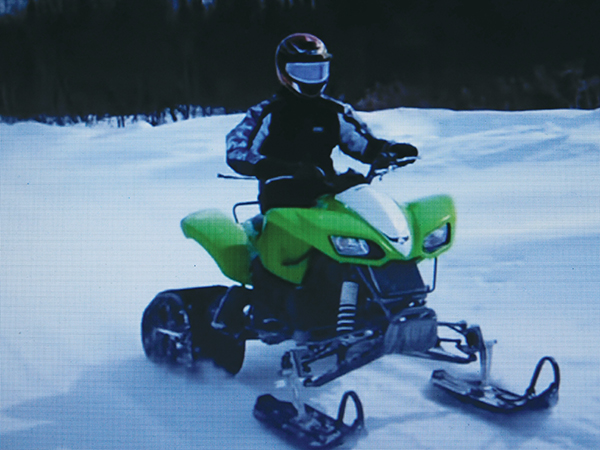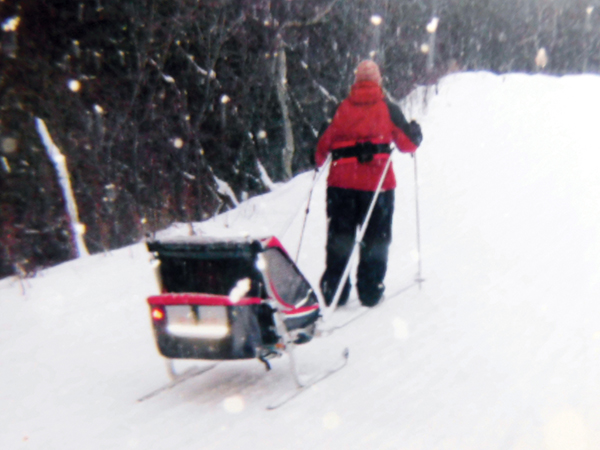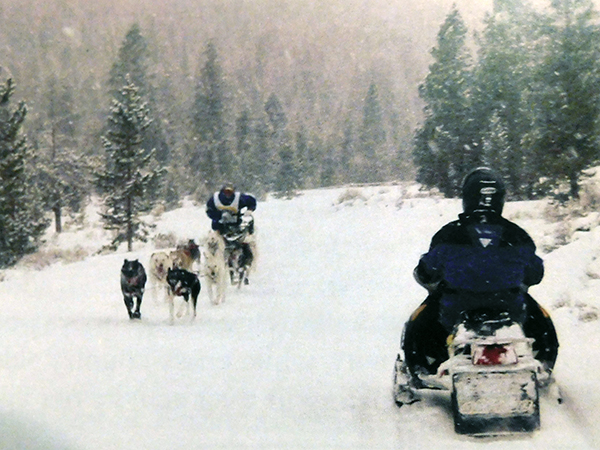By Jim Duke
What does a snowmobiler do when there is not enough snow to safely and legally operate his snowmobile? This question has been asked more often than I care to guess, but it is a legitimate question, especially in today’s society where the attitude of equality trumps the more realistic one of ownership. I refer, of course, to the trails system throughout the state where seasonal use is predicated by specific dates for a start/stop of legal recreational usage.
A case in point is snowmobile use during the firearms deer season, which is limited to specific hours of the day regardless of how much snow may be on the ground or that wheeled vehicle use on the designated trails is prohibited during the recognized “snowmobile season” and enforceable by law officers for violating those restrictions. But, occasionally, the regulating agency or agencies overseeing a certain section of trail will find themselves involved with conflict between user groups.
For example, the designated snowmobile trail utilizes a portion of an unplowed seasonal county road with full cooperation of the county road commission. The local trails sponsor has authority to groom and maintain it as a legally signed snowmobile trail, but it remains a chartered county road as well and, by state law, any registered and licensed street-legal vehicle has the right to drive on that road at any time of the year, whether it is plowed or not. Of course, to do so in the dead of winter will almost guarantee being stuck somewhere without any hope of being rescued and possibly a long, cold wait until snowmobilers come along. Yep, now comes the conflict!
In most cases, however, the conflict can be greatly reduced or eliminated by the authorizing agency, in this case the County Road Commission, by posting signage closing those roads for the season. This doesn’t guarantee some vehicles may still attempt to drive on them, but it does serve to warn of the consequences for doing so. This is but one example of the potential conflicts trail users might encounter regardless of season or time of year. A more common conflict occurs during the specific seasons when one particular group encroaches on another, even though the first has been specifically prohibited, such as wheeled vehicle use, including ATVs, during the period designated exclusively for snowmobiles. With conflicts such as these, there can be no compromise!

There are other conflicts, however, where compromise can be reached if properly orchestrated, and if safety concerns have been properly addressed. An example might be a proposed and approved event where use of a portion of a designated snowmobile trail is necessary. Agreement for such use must always consider what impact that activity might have on snowmobile use during the event, and for how long. Of primary concern is the safety of both snowmobilers and event participants.
Occasionally, common ground might be found through regulated and/or permitted events for a limited period of time. One common example would be where a scheduled mushing activity, such as those held from time to time, where dogsleds might be encountered on snowmobile trails. The compromise would more than likely entail specific caution signage preceding the area and may require a reduction in speed as well as adequate personnel to regulate travel. It may even be necessary to temporarily reroute one of the user groups, but such an event should never close the snowmobile trail to snowmobile use.
In recent years, it has become more and more evident that there will always be some conflicts among all trail users and, where possible, there must be compromises. With the diminishing acreage of both public and private lands, there is only so much available for trails — and all trail users must learn to share. The biggest cause for conflict comes when it’s time for maintenance and repairs and determining who is responsible to foot the bill. Most regulatory agencies agree that it falls to the motorized recreation communities because only the snowmobilers and, to a slightly lesser degree, the off-road users have a viable funding source while the other (non-motorized) trail users are getting a free pass.


While it may be acceptable in the eyes of the state, it’s a bitter pill to swallow when those who have nothing invested in the maintenance of the trails seem to benefit the most. In these situations, it is virtually impossible to find any common ground and the motorized vs. non-motorized users will forever be at odds.
Try as they may to arbitrate such differences, the regulating agencies — whether at the state level or on the national stage — usually find themselves stuck in the middle and unable to appease either user group. It can easily become a shooting match where neither side wins and everybody, even those not directly involved, loses out. It behooves all trail users to work in harmony where there is even the slightest amount of compatibility in order to allow all to utilize the trails within their own seasonal limits without encroachment!
With this in mind, it is unrealistic to find wheeled vehicles on the groomed snowmobile trails, including the recently introduced “Fat Tire Bikes.” It is equally unrealistic to allow modified conversions from wheel to track vehicles to share trails in the wintertime, if for no other reason than for safety purposes. Most snowmobile trails are only 8 feet wide and because of this a maximum width imposed on the snowmobile industry is 48 inches.
Any wheeled to track conversion will exceed this width, making it impossible for any opposing units to safely pass. It has also been proven that any converted ATV or UTV cannot achieve a speed considered safe and would be a huge hazard to snowmobiles operating on the same trails. Some may argue that meeting one or more of these conversions on a snowmobile trail is no different than meeting a groomer, but that’s not necessarily true. A grooming tractor is a high-profile vehicle and is well lighted with flashing beacons both front and rear, whereas an ATV or side-by-side is not.
Another consideration is the grooming tractor is painted bright colors while most of the latter are not; in fact, most are usually painted in a camo pattern.
Are there any possible resolutions to the conflicts discussed here or even those left unmentioned? Doubtful, to say the least, but that’s not to say they should be dismissed and put out of mind. There are several volunteer organizations continuously working to resolve such conflicts. The recommendations they may offer will most definitely not be acceptable to some, but that doesn’t mean compromise is off the table. Progress can only be achieved through a mutual understanding of what is desired, what is necessary and what is best! Thank goodness there are dedicated individuals willing to devote their time to these dilemmas.

